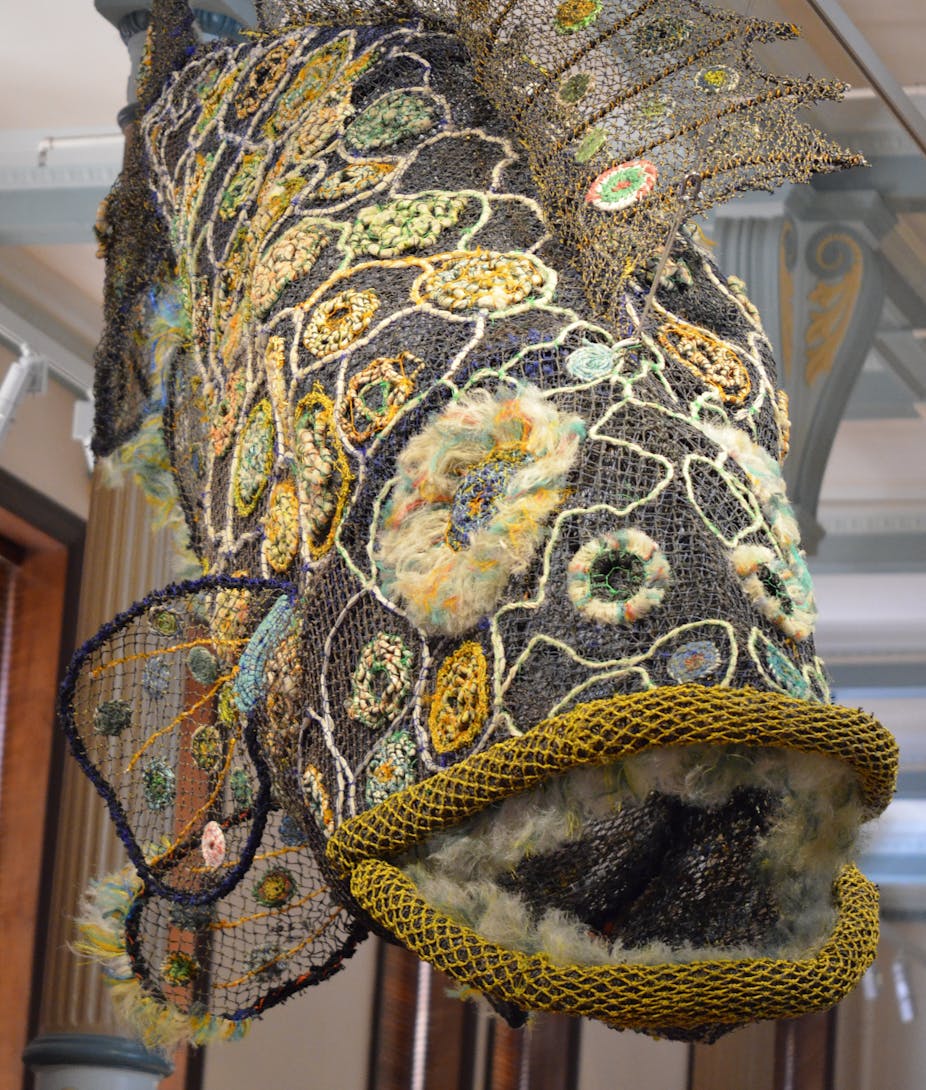With more than half a million people participating in last Sunday’s Clean Up Australia Day, it’s perhaps not surprising that some odd objects came to light. Not all the rubbish was on land, and not all the rubbish was what you might normally expect to find in the water.
In New South Wales, divers in the Hastings River removed shopping trolleys, mobile phones and a scooter, while Tasmania’s Derwent River yielded bicycles, car batteries and even furniture. It’s a reminder that individual actions can have dramatic impacts underwater, especially when we normally have no way of seeing it.
Nobody knows that better than the indigenous people who live on the Gulf of Carpentaria and Torres Strait, the parts of Australia most affected by drifting ghost nets. Lost or abandoned from fishing vessels, ghost nets can be up to 6 kilometres long and are known to kill more than 200 species of marine animals and birds. They also damage culturally and biologically significant reefs, and can be hazardous to the small boats typically used by indigenous people.

In their own year-round versions of Clean Up Australia Day, Indigenous Ranger and Caring for Country groups maintain a constant lookout on our northern coastlines, patrolling the beaches and removing the dangerous nets. Recently, indigenous artists have joined the fight against ghost nets, experimenting with how to turn these waste items into beautiful sculptures.
A tale of two creatures
An example of such an object is Dauma and Garom, a 6-metre ghost net sculpture by Torres Strait artists at the Erub Erwer Meta Arts Centre, on Darnley Island in the eastern Torres Strait. Commissioned by the Australian Museum in 2013, Dauma and Garom can now be seen in the Museum’s Indigenous Gallery.
The work tells the story of two creatures who live on nearby Sekemed Reef: Dauma the mudcrab, and Garom the rock cod. The two creatures spend so much time gazing at each other in the shallow pool that they fall in love and get married. The wedding is attended by all the other animals, who travel to the event as a “dancing fleet” led by the “boss dancer”, the cockroach.

The gentle story, and the vibrant, almost playful nature of the work belies its deadly origin as wasted fishing nets. Artist Maryann Bourne, one of the creators of Dauma and Garom, said “the reason we use it is because the ghost nets destroy marine life”.
The first element of the artist’s strategy is to increase the incentive to remove ghost nets from the water by making them into a saleable commodity (they were previously dumped or burned when retrieved).
The second aim is to raise awareness, through art, of ghost nets as an environmental issue.
Awash with debris
This artist-driven environmental activism is hopefully a step towards solving the much wider global problem of marine plastics. Some pieces of plastic debris can last for centuries and travel huge distances in the ocean. But whereas most plastic quickly decays into micropellets, which cause their own problems for marine ecosystems, the fishing nets are made to last.
In far north Queensland it seems that the problem is not the locally based fishing industry, which has successfully reduced the loss of nets at sea in recent years. Instead, many of the nets are thought to come from illegal or unregulated fishing more than 1000 kilometres away in the Arafura Sea.
A 2013 report documented 6,670 nets collected from 2,705km of coastline between 2010 and 2012. Of the 364 animals found entangled in the nets, some 70% were endangered turtles, although this figure is likely to be an underestimate of the true problem as it includes only those animals that were carried all the way to shore and then found by rangers.
The nets retrieved from our beaches are merely the tip of the iceberg. As the Torres Strait’s prevailing currents run from east to west, most of the ghost nets can be expected to float into the Indian Ocean, where they will ultimately join one of the world’s giant floating garbage patches. But it can take years for ghost nets to move out of the Arafura Sea, and all the while these nets keep fishing.
Funding in doubt
Sadly, the issue of abandoned fishing nets in our oceans is nowhere to be seen in our political discourse. Funding cuts mean the future of Ghost Nets Australia, the lead organization dedicated to researching and raising awareness of ghost nets, is in doubt. Art is not only a powerful way of raising awareness of ghost nets, it may soon be one of the only ways we have to draw attention to this global environmental menace.
In the meantime, ghost net sculptures such as Dauma and Garom provide an insight into the artists’ struggle to protect their marine environment. If the sculptures represent a challenge to the transnational fishing industry, they also represent a challenge to us as individuals. These sculptures remind us that whether we eat sustainable seafood or toss plastic into a stormwater drain, our actions can affect people and the environment thousands of kilometres away.
As Darnley Island artist Racy Oui-Pitt reminds us: “Just like the cod (Garom) and the crab (Dauma) together in the keper (shallow pool), we are all connected.”
Sadly, as all of Clean Up Australia Day’s volunteers already know, one of the ways we are currently connected is through our rubbish.

